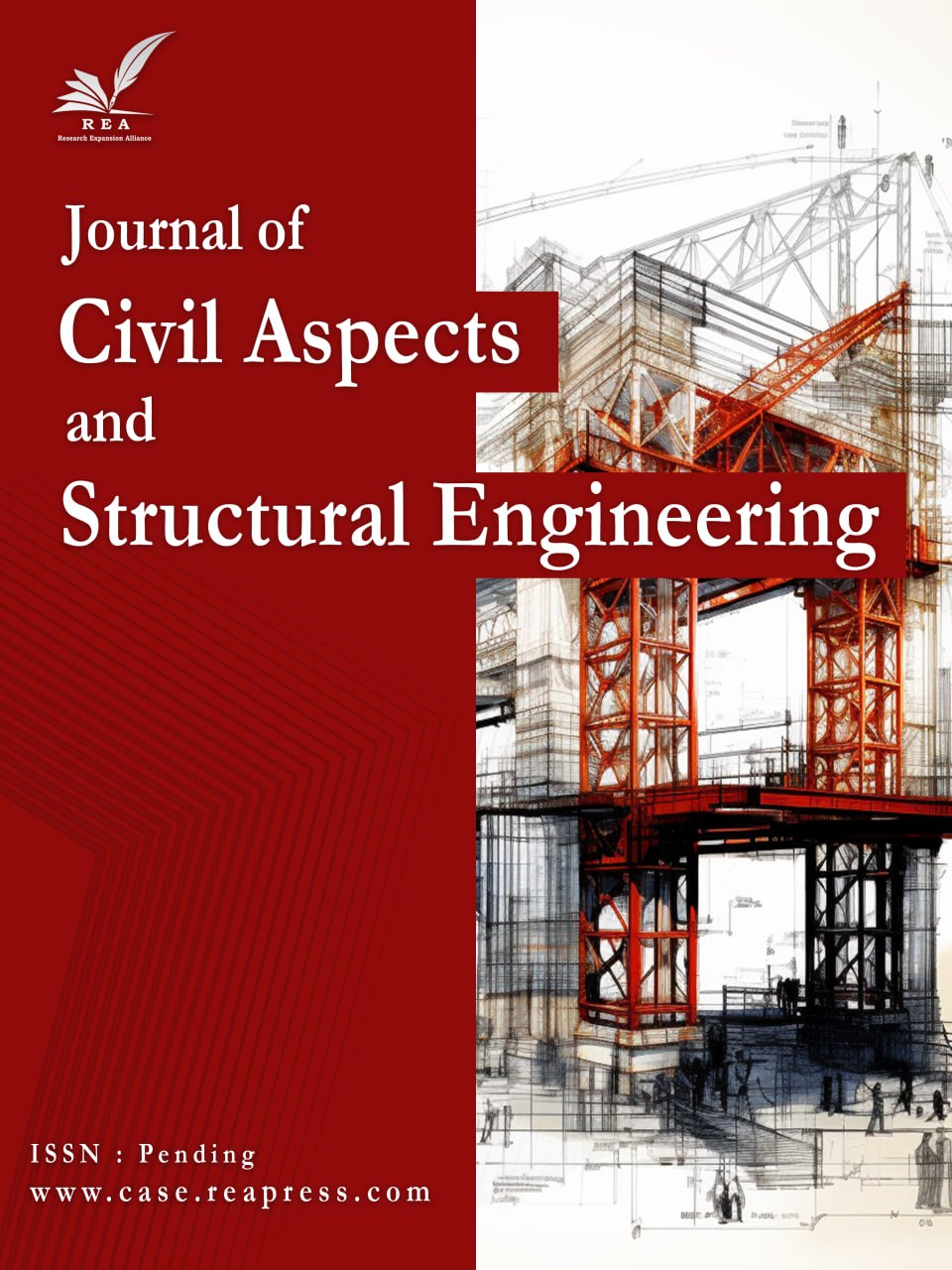Physical and Mechanical Properties Investigation of Concrete with Rice Husk Ash and Recycled Aggregate
Abstract
Over the past years, extensive studies have been conducted on concretes containing rice husk ash and recycled aggregate, which have shown the advantages of those concretes. Today, in most parts of the world, there has been a huge evolution in concrete technology to achieve concrete with high strength. Considering that the compressive strength of concrete is one of the most important mechanical characteristics of concrete and also one of the main parameters of concrete design, extensive research has been done by researchers to investigate the factors influencing the compressive strength of concrete. In this thesis, the physical and mechanical properties of concrete with rice husk ash and recycled aggregate have been studied. The results of this laboratory study show that the compressive strength of concrete containing 30% recycled aggregate and rice husk ash is higher than that of 40%. Also, the average 7-day compressive strength of concrete containing 30% recycled aggregate and rice husk ash is 288, and the average of 40% is 218.5, which indicates that the sample is more than 30%. The average 28-day compressive strength of concrete containing 30 The percentage of recycled aggregate and rice husk ash is 289. The average of 40% is 314, which shows that the 40% sample is more. Also, the 28-day tensile strength of concrete containing 30% recycled aggregate and rice husk ash with a water-to-cement ratio of 0.377 is equal to 39. The average of 40% is 42, which indicates that the tensile strength of the 40% sample is higher.
Keywords:
Mechanical performance, Rice husk ash, Recycled aggregate, Compressive strength, Tensile strengthReferences
- [1] Corinaldesi, V. (2010). Mechanical and elastic behaviour of concretes made of recycled-concrete coarse aggregates. Construction and building materials, 24(9), 1616–1620. https://doi.org/10.1016/j.conbuildmat.2010.02.031
- [2] Kou, S. C., & Poon, C. S. (2012). Enhancing the durability properties of concrete prepared with coarse recycled aggregate. Construction and building materials, 35, 69–76. https://doi.org/10.1016/j.conbuildmat.2012.02.032
- [3] D’angelo, J., Case, E. D., Matchanov, N., Wu, C. I., Hogan, T. P., Barnard, J., … Kanatzidis, M. G. (2011). Electrical, thermal, and mechanical characterization of novel segmented-leg thermoelectric modules. Journal of electronic materials, 40, 2051–2062. https://doi.org/10.1007/s11664-011-1717-7
- [4] Vejmelková, E., Koňáková, D., Kulovaná, T., Keppert, M., Žumár, J., Rovnaníková, P., … Černý, R. (2015). Engineering properties of concrete containing natural zeolite as supplementary cementitious material: strength, toughness, durability, and hygrothermal performance. Cement and concrete composites, 55, 259–267. https://doi.org/10.1016/j.cemconcomp.2014.09.013
- [5] Hamzeh, Y., Ziabari, K. P., Torkaman, J., Ashori, A., & Jafari, M. (2013). Study on the effects of white rice husk ash and fibrous materials additions on some properties of fiber–cement composites. Journal of environmental management, 117, 263–267. https://doi.org/10.1016/j.jenvman.2013.01.002
- [6] Givi, A. N., Rashid, S. A., Aziz, F. N. A., & Salleh, M. A. M. (2010). Assessment of the effects of rice husk ash particle size on strength, water permeability and workability of binary blended concrete. Construction and building materials, 24(11), 2145–2150. https://doi.org/10.1016/j.conbuildmat.2010.04.045
- [7] Sharma, R. K. (2014). Effect of substitution of cement with rice husk ash on compressive strength of concrete using plastic fibres and super plasticizer. KSCE journal of civil engineering, 18, 2138–2142. https://doi.org/10.1007/s12205-014-0634-8
- [8] Madandoust, R., Ranjbar, M. M., Moghadam, H. A., & Mousavi, S. Y. (2011). Mechanical properties and durability assessment of rice husk ash concrete. Biosystems engineering, 110(2), 144–152. https://doi.org/10.1016/j.biosystemseng.2011.07.009
- [9] Hamad, A. J. (2017). Size and shape effect of specimen on the compressive strength of HPLWFC reinforced with glass fibres. Journal of king saud university-engineering sciences, 29(4), 373–380. https://doi.org/10.1016/j.jksues.2015.09.003
- [10] Zareei, S. A., Ameri, F., Dorostkar, F., & Ahmadi, M. (2017). Rice husk ash as a partial replacement of cement in high strength concrete containing micro silica: evaluating durability and mechanical properties. Case studies in construction materials, 7, 73–81. https://doi.org/10.1016/j.cscm.2017.05.001
- [11] Ehsani, A., Nili, M., & Shaabani, K. (2017). Effect of nanosilica on the compressive strength development and water absorption properties of cement paste and concrete containing Fly Ash. KSCE journal of civil engineering, 21, 1854–1865. https://doi.org/10.1007/s12205-016-0853-2
- [12] Dekhanchi, K., & Saqi, H. (2012). A review of the use of rice husk ash in concrete and the factors affecting its pozzolanic properties. First national conference on structural engineering of Iran. Tehran, Iran. Civilica. (In Persian). https://civilica.com/doc/400936
- [13] Rawarkar, K., & Ambadkar, S. (2018). A Review on Factors Affecting Workability of Concrete. International journal of innovative research in science, engineering and technology, 7(8). https://www.ijirset.com/upload/2018/august/24_A REVIEW _IEEE.pdf
- [14] Iran concrete clinic. (2024). What is meant by spreading and compacting concrete? https://b2n.ir/n71100
- [15] Subash Koneru, V., Nitin Chowdary Kolli, S., Gopal Vemuri, V., Gurram, K., Ghorpade, V. G., & Rao Hanchate, S. (2023). Development of optimum sustainable metakaolin replaced cement concrete based on homogeneity, compressive strength and rapid chloride ion penetration. Materials today: proceedings, 80, 1306–1310. https://doi.org/10.1016/j.matpr.2023.01.061


